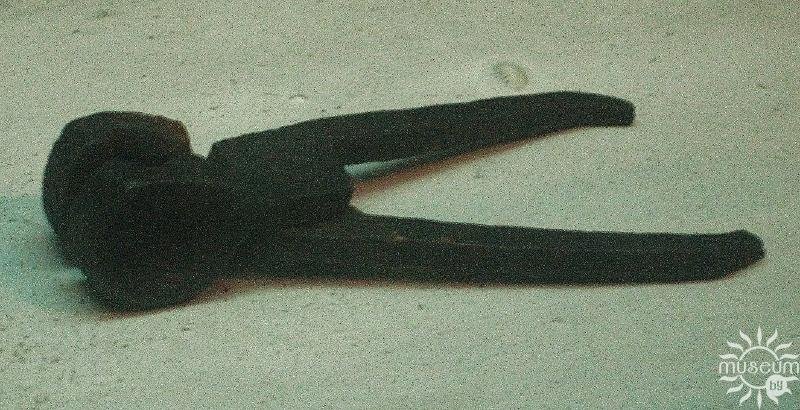In the exposition of the Museum of Local lore you can see the pulleys of the 18th century, which was found in 2005 during archeological excavations carried out by D.V. Duce on the territory of the former Great Posad.
It is officially considered that in Europe firearms appeared in the 14th century, when the development of technology allowed the use of gunpowder energy. Initially, these were powder guns, shotguns appeared much later - at the beginning of the 17th century.
In the process of improving small arms and ammunition evolved to it. They have gone from rounded pebbles to bronze, cast-iron and, finally, lead bullets. For a long period, replacing each other or existing in parallel, bullets of various forms were used: spherical, spherocylindrical, pointed, blunt and others.
The dominant technology for the manufacture of lead bullets and grapeshot was cast, and the main tool for this was the pulleys (forms). In order to make the right amount of bullets, it took a long time. There are two known technologies for their production: “cold” and “hot”. Gunsmiths resorted to the “hot” method for making bullets with pulleys, for which the technology was used to pour molten metal into bullet nests and to manufacture ammunition of a given shape and caliber.
Puleleika consists of two halves with handles, interconnected (like scissors) with a bolt and nut. Both halves, put together, make up a cube. The adjoining workers (internal) surfaces of both halves have hemispherical bullet sockets with the upper channel or vent.
Puleleyku treated with care, do not allow the clogging of its nests with lead and small debris. Puleleiki cleaning with sandpaper and crushed brick was strictly prohibited. At the end of the work, the pulleys were carefully wiped with a clean rag, the metal parts were greased with a thin layer of wooden oil, which prevented rusting. The complexity of the entire casting process is that with the help of such a pulley it was possible to make only one bullet. It took a lot of time and effort to prepare the required amount of ammunition for one soldier, which in the conditions of martial law was an unaffordable luxury. Therefore, these tools quickly fell out of use. In place of the 1-nest came 5-nested puleleks, which were quickly improved. P>
Pulleys
- 876 reads
